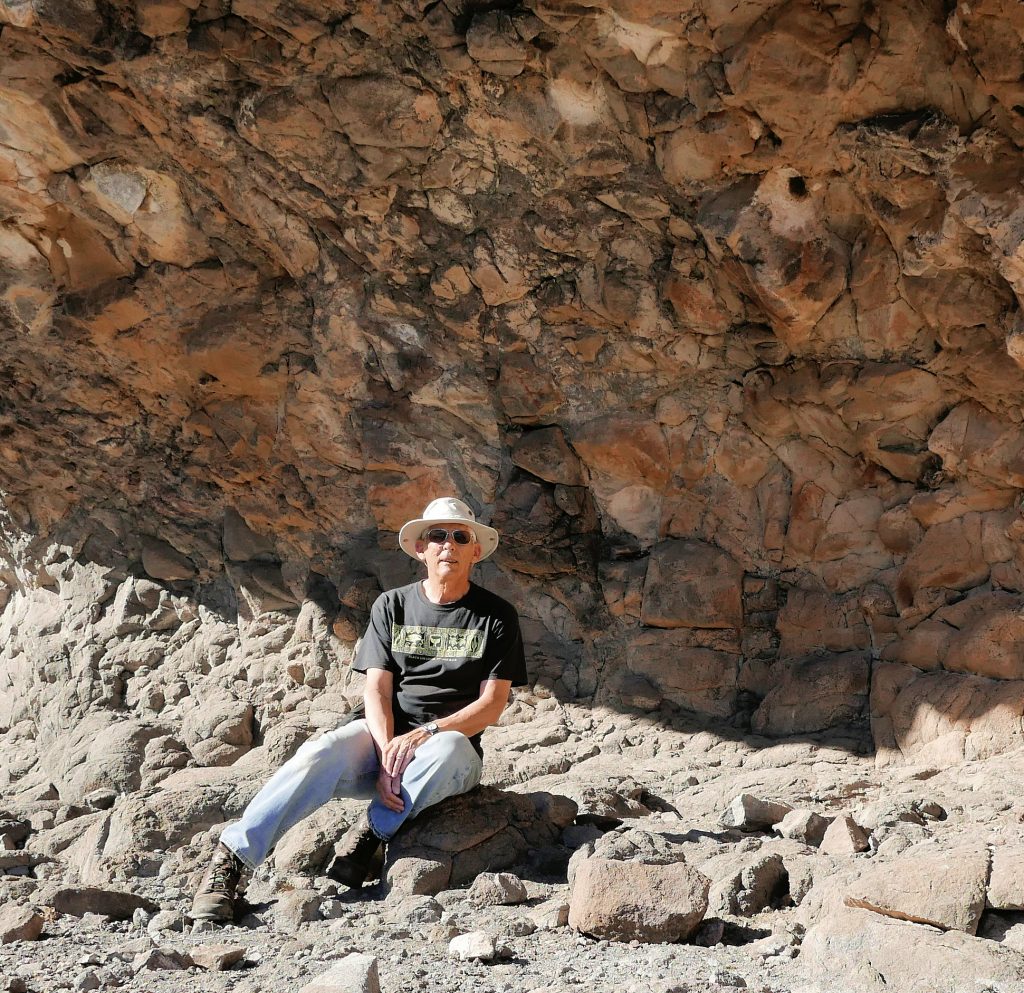Seed Milling or Metate Site (S14)
This is located at N26.74xxx, W111.92xxx and altitude 74 meters. This is close to the head of the arroyo and the terrain steepens significantly as you go west from here. There is a small bluff at the side of the arroyo about 15 meters high with a sheltered depression on top bounded by a rocky ridge about 3 meters high on two sides.
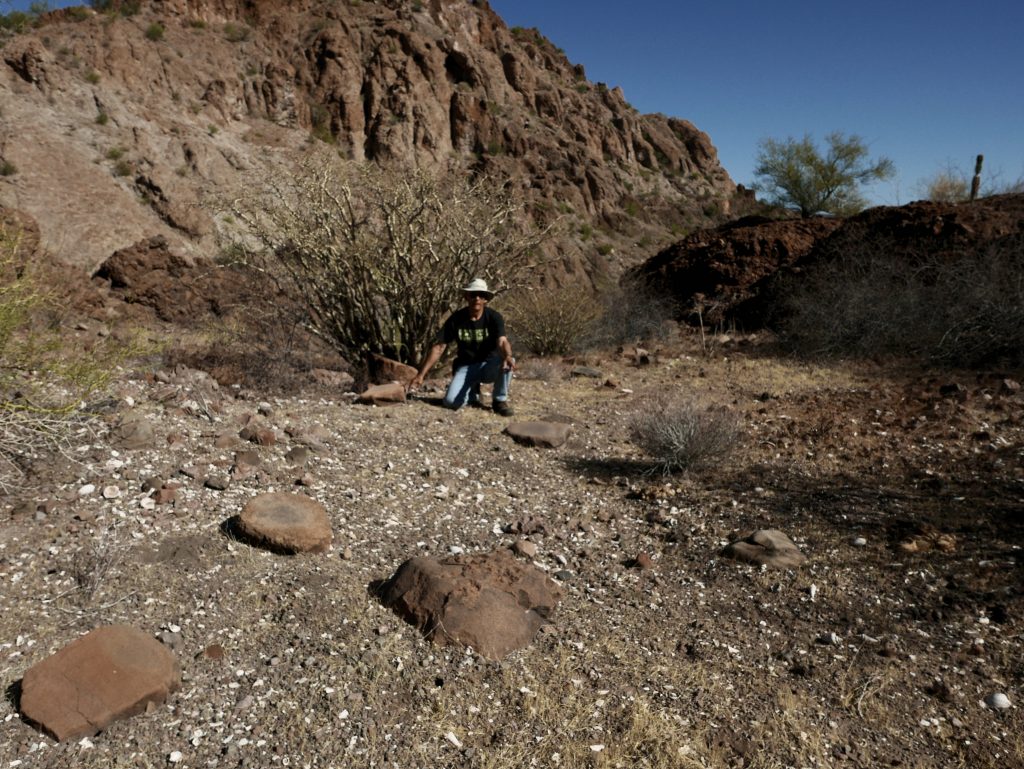
You are attracted to the abundance of shells in the vicinity at first, then you notice the metates. There are four portable metates over about a 5 meter distance. No manos were found. In the photo I’m pointing at two metates and the other two are in the left foreground.
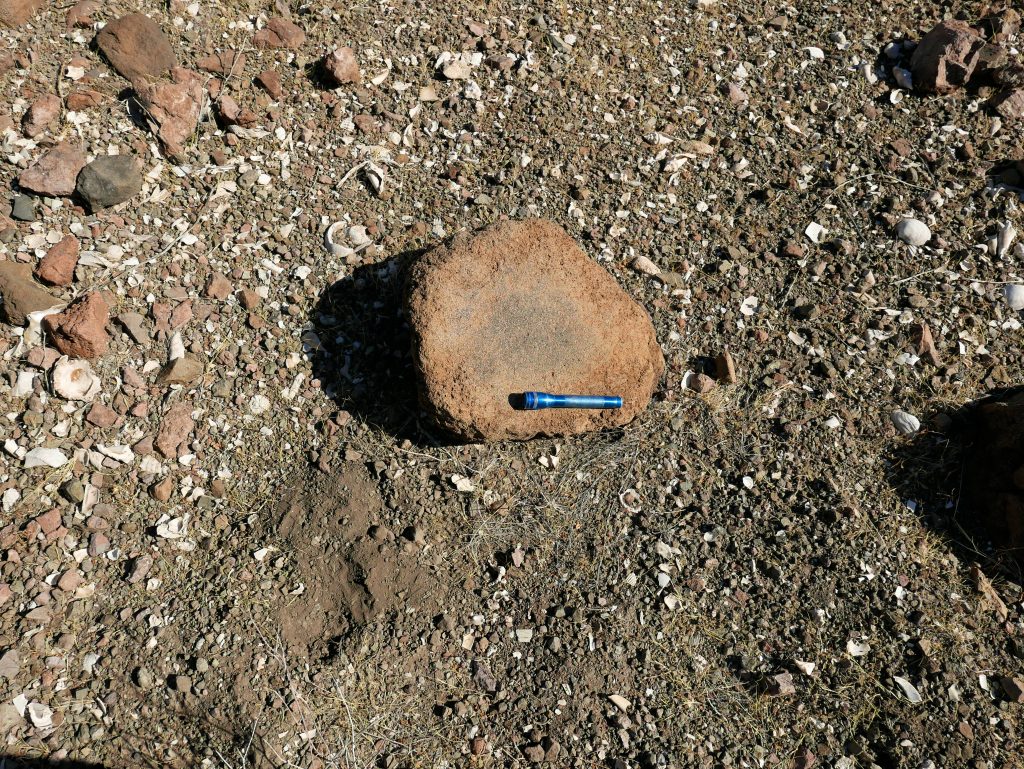
The proximity of the metates suggest a communal/social meeting place in order to grind seeds. (and complain about the men folk perhaps?)
The abundance of shells indicates the site was used often.
And the search for Manuel Diaz’ Cave goes on. . . .
We were not having any success in finding the Manuel Diaz’Cave. We searched both sides of the arroyo more than once and while finding caves and shelters with the right exposure to the north-east, we couldn’t seem to locate one with significant art in it.
‘Let’s go to the source and ask Manuel again!’
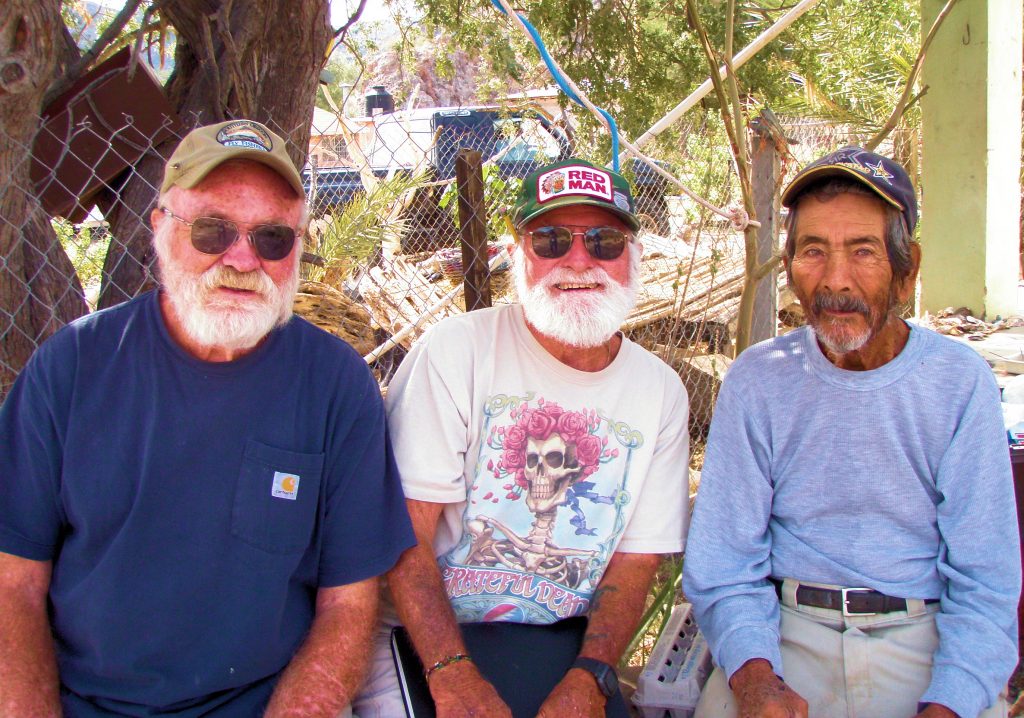

So, armed with a bottle of Tequila as a gift, Jim, Gary and I talked with Manuel Diaz in February of 2016 and he insisted that “his” cave is located at the back (west) of the part of the arroyo that contains the Family cave/Pez Gallo. . .but. . it may also be located west of the dam. Manuel was not totally clear to me on this topic. A better understanding of Spanish would have made things clearer!
So, Off we went again. . ..
Lizard Man Shelter (This is Manuel Diaz’ Cave) (S15)
So, was the search for Manuel Diaz’ cave worth the effort? Read below and you be the judge.
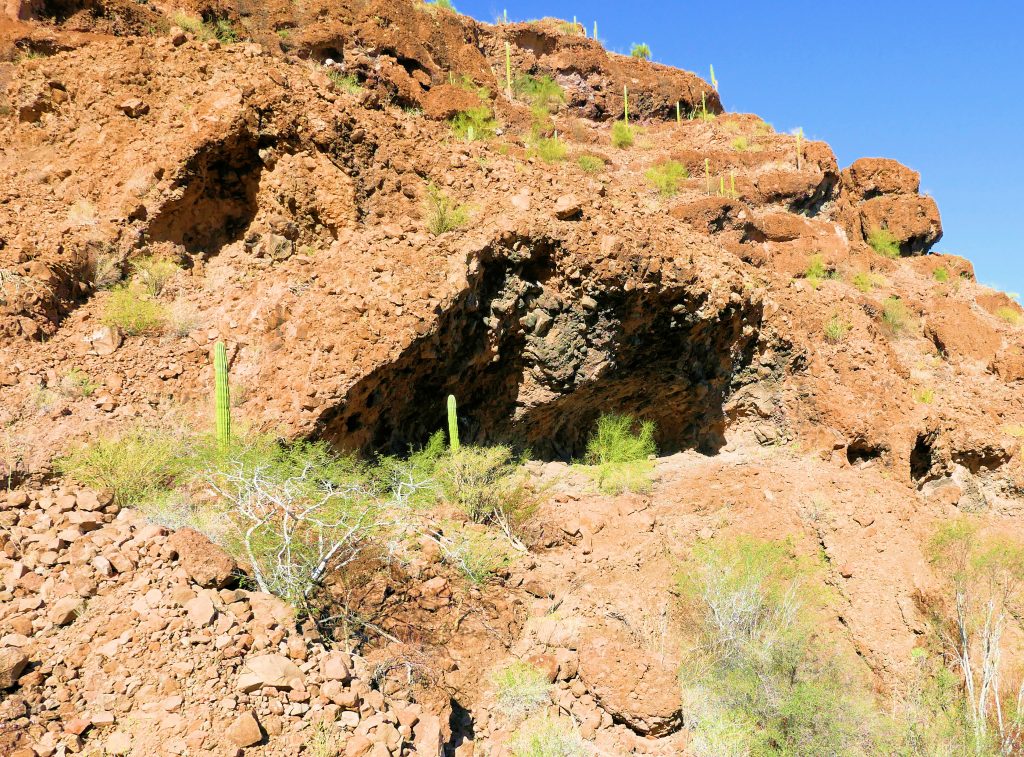
This site is located in the El Tordillo arroyo at N26.74xxx, W111.91xxx and about 70 meters altitude.
This shelter is located behind (west of) the dam where there is a wash that would feed water to the catchment area. The shelter is on the west side of the wash about 10 meters immediately above the wash and has an easterly prospect.
The location is about 1km from the mouth of the arroyo and significantly different from the location described in Eric Ritter’s article in Rock Art Papers. . . Ah, Well.
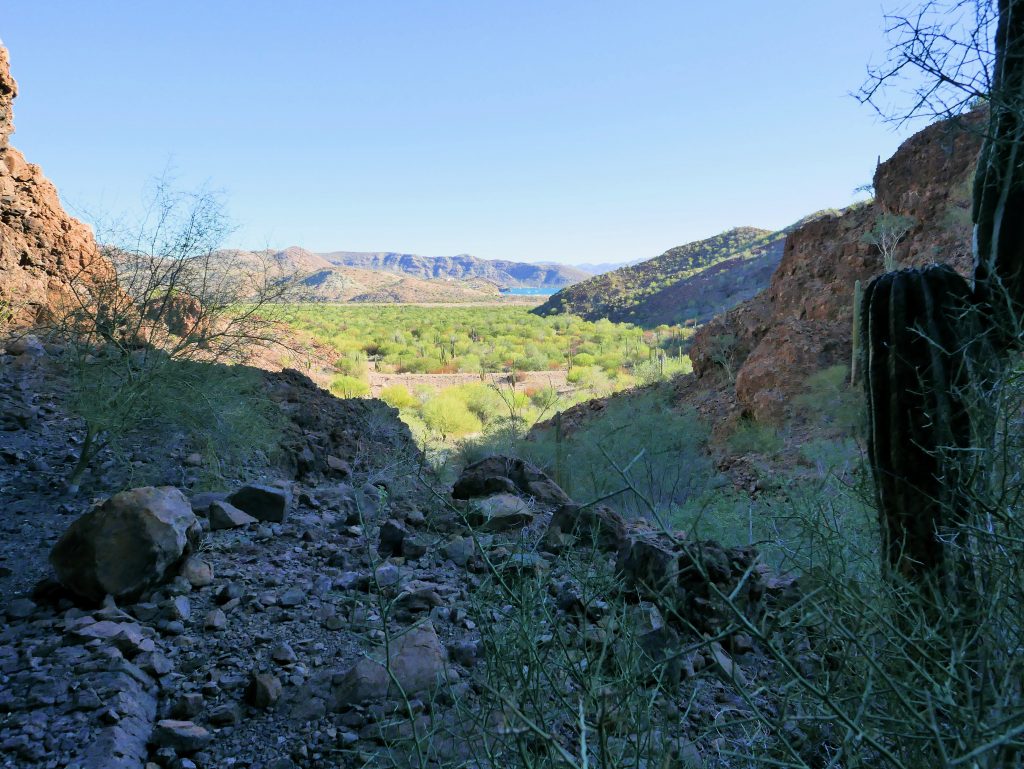
The community at Posada Conception and the Sea of Cortez can be seen from the shelter to the north-east. There is an almost vertical rock wall from the shelter to the wash.
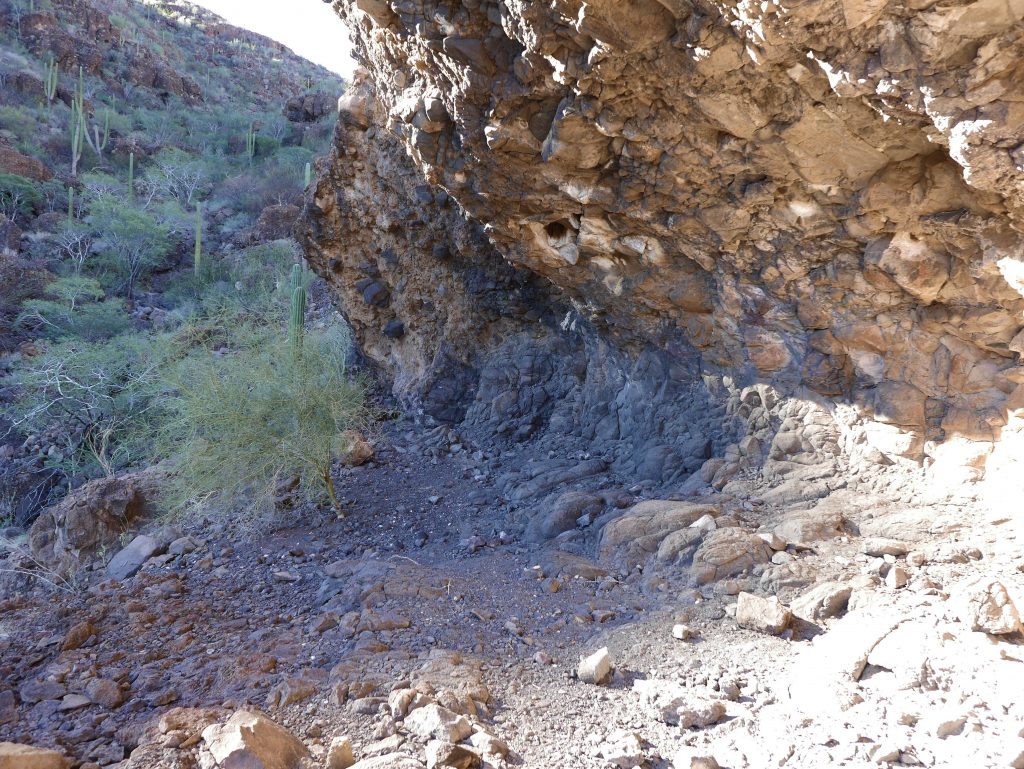
The shelter is about 25 meters wide, 8 meters high and 3 meters deep. Rock surface is volcanic tuft with some Andesite boulders at lower levels.
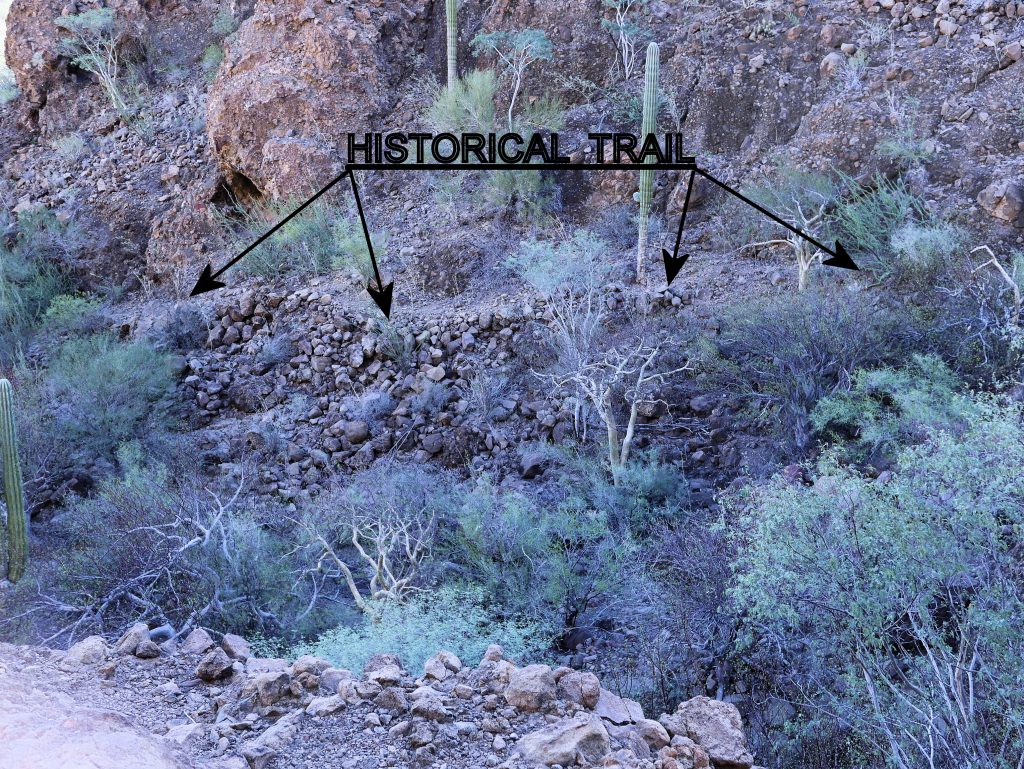
There is the remains of a Historical Trail leading to the shelter on the east side of the wash that is clearly visible from the shelter.
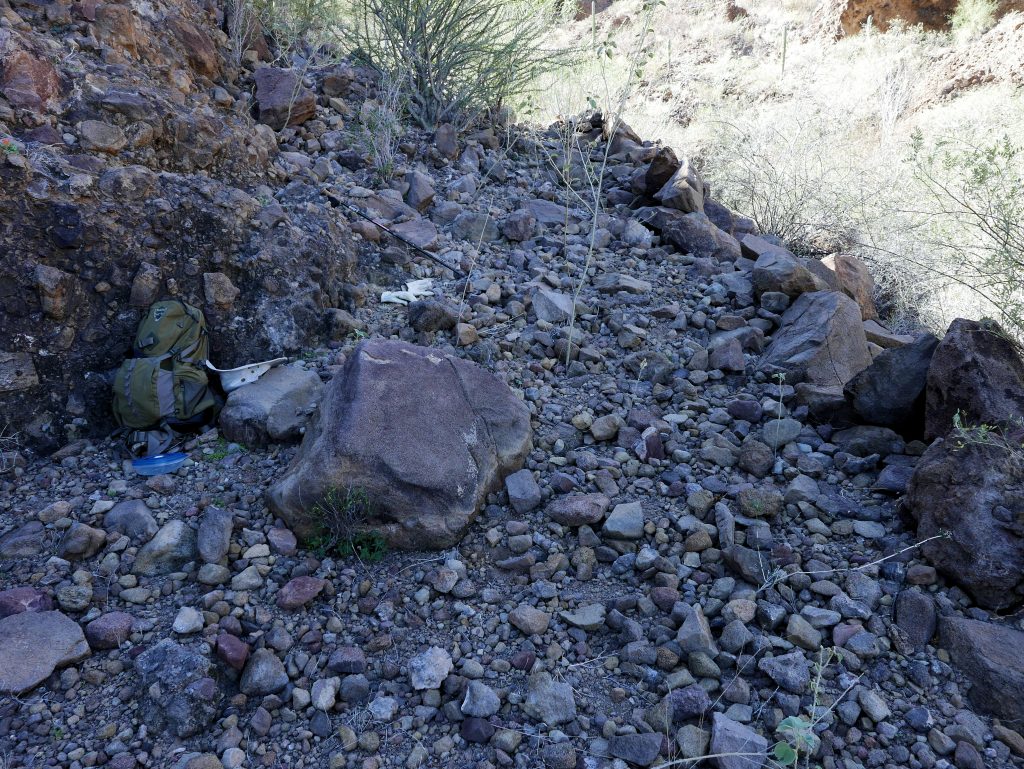
This is a part of the Historical Trail. The Lizard Man cave is to the right. You can see that most of the large rocks have been moved to the side and there is sufficient room (in most places) for people to pass each other when going in opposite directions without stepping off the trail.
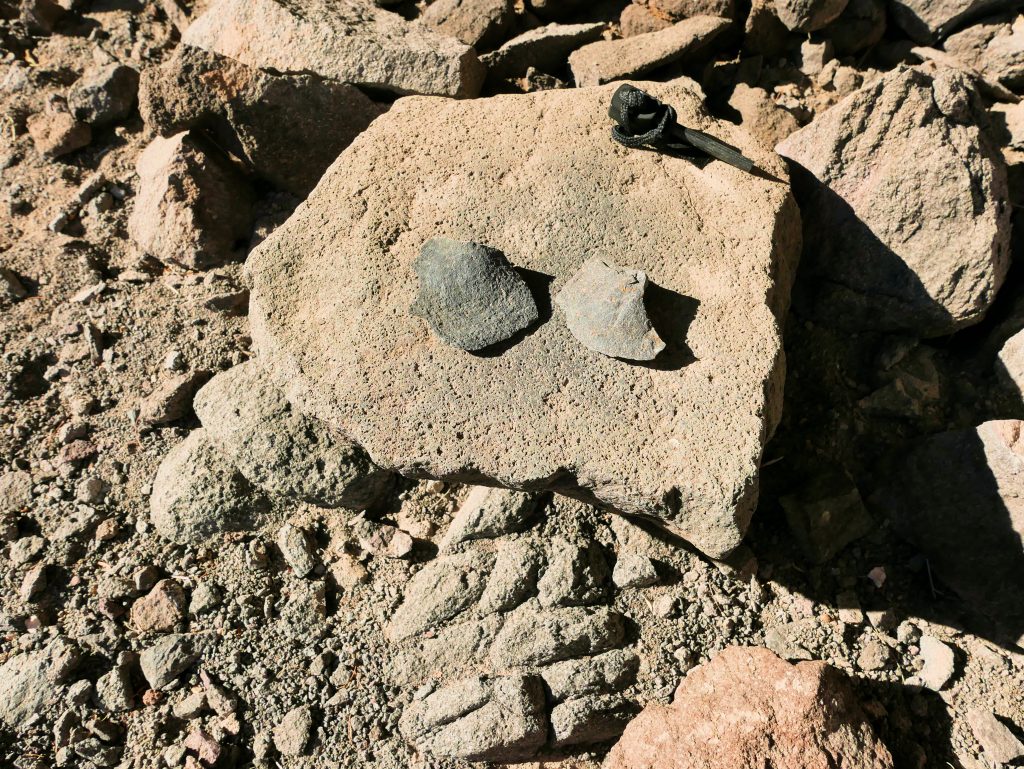
A few shells were in the area but there are less shells than one would expect considering the amount of art in the shelter. Two metates were found. The shelter is in shade till mid-morning then will be shaded again in late afternoon, making these times better to view the art without the glare of sunlight. The wash in the immediate area will be a source of Tinajes during the summer wet period.
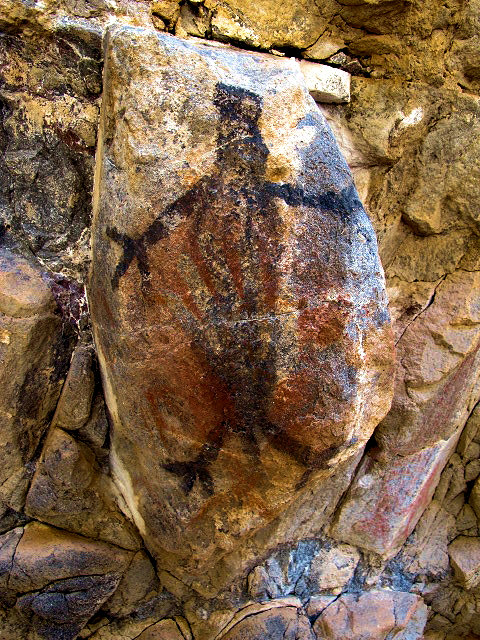
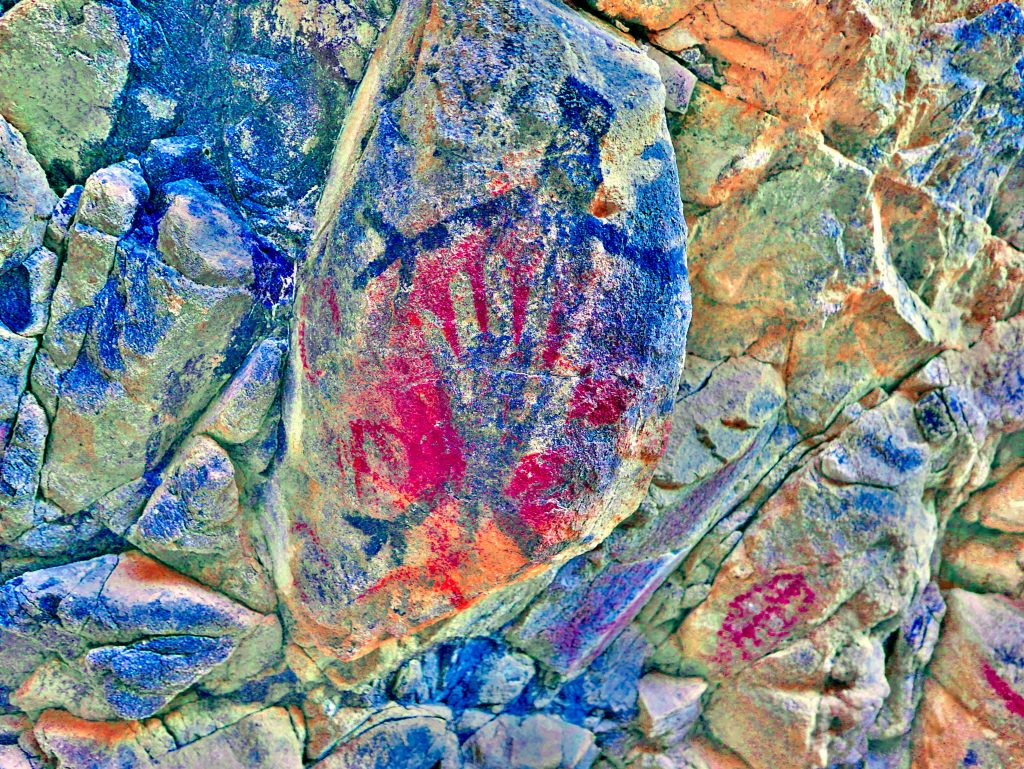
Photo Left by Bruce Schweers
Photo above LZ-08_flt_lds by author
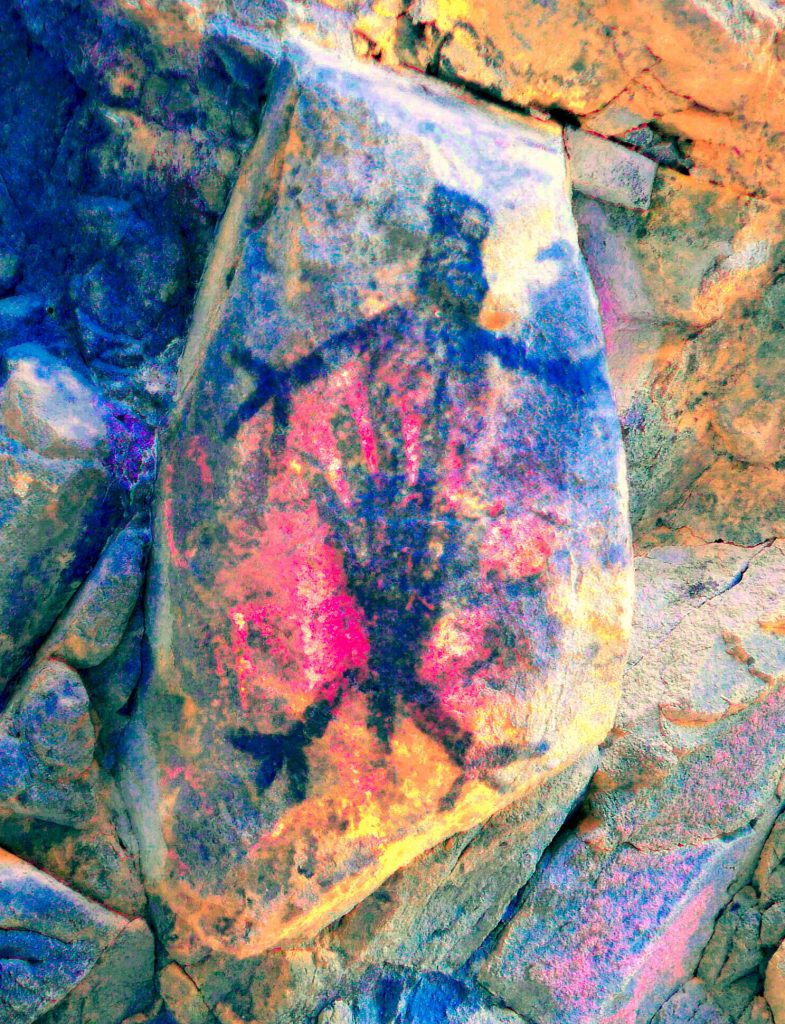
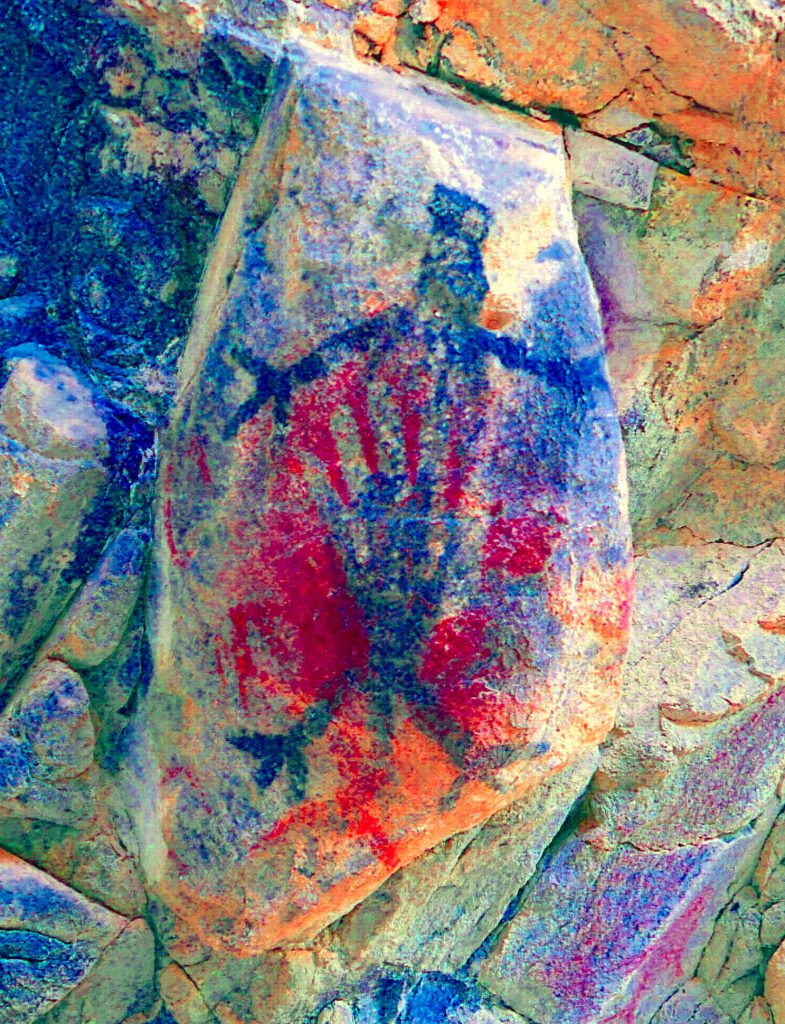
The prominent art feature is a Black Lizard Man incorporated on two planes of an Andesite boulder sticking out of the backgound at about 2 meters from the floor of the shelter. The Lizard Man was painted over a red fish, the tail of which is still visible at the bottom of the image. However, superimposed over the Lizard Man is a reverse hand print of a left hand in red paint. The Lizard Man is about 50cms high with a black and white can feature on it’s head. There is a noticeable ‘bump‘ on the left arm of the Lizard Man and there may have been a similar one on the right arm as well, although there is traces of where that paint flaked off. Similar ‘bumps’ can be seen on the Monos in the San Borjitas cave. Nobody knows what they are. (Unless the Lizard Man was into Roller Blading and needed elbow pads!) There are three toes on each arm/foot of the lizard.
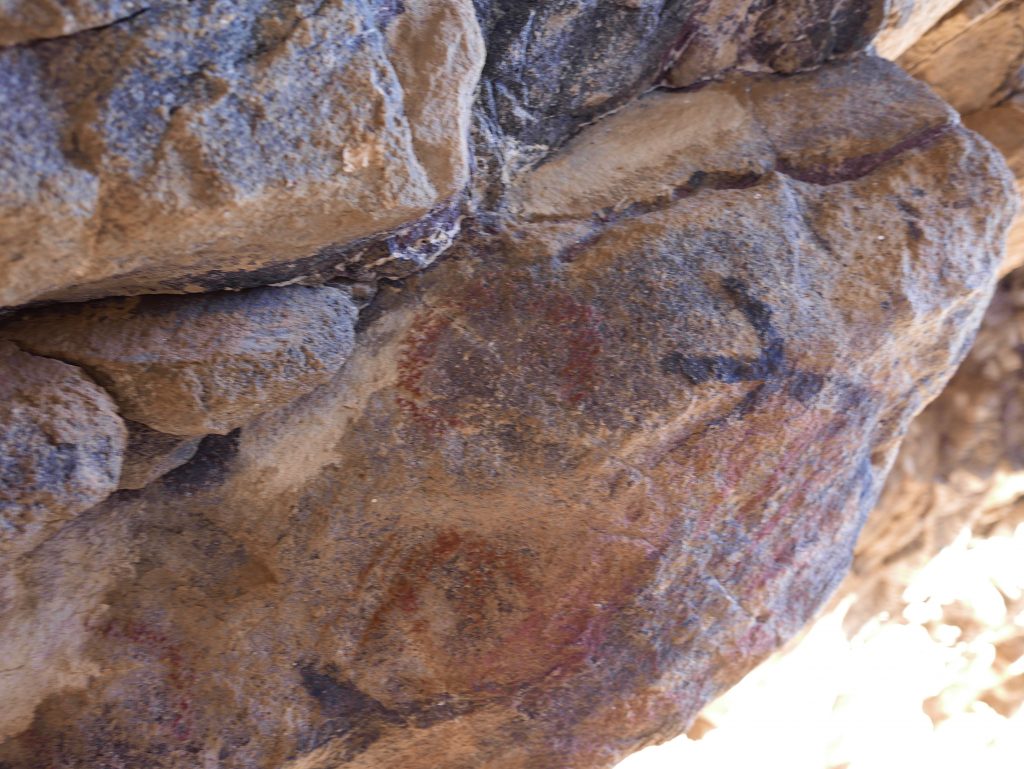
On the left side of the same protruding rock are two, part-circle (270 degree) images, reminiscent of mule’s horseshoes, about 6cms across of what could be renditions of ‘throwing sticks’. In this area, closer to the handprint is a small Trigger style fish in red with the tail down.
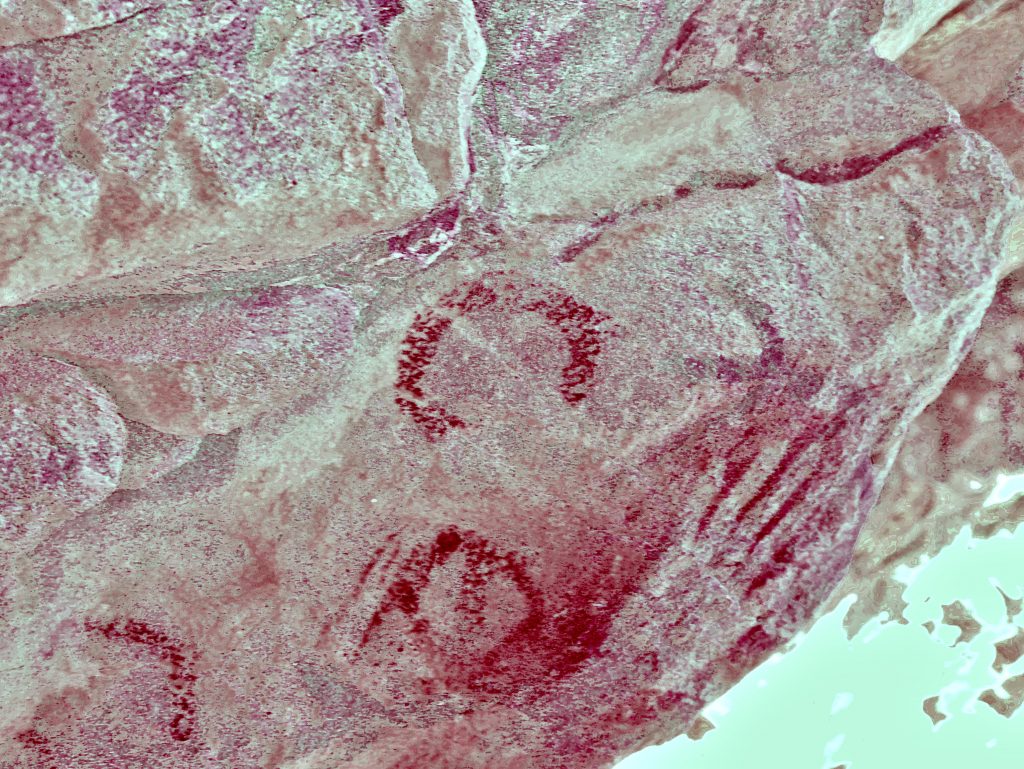
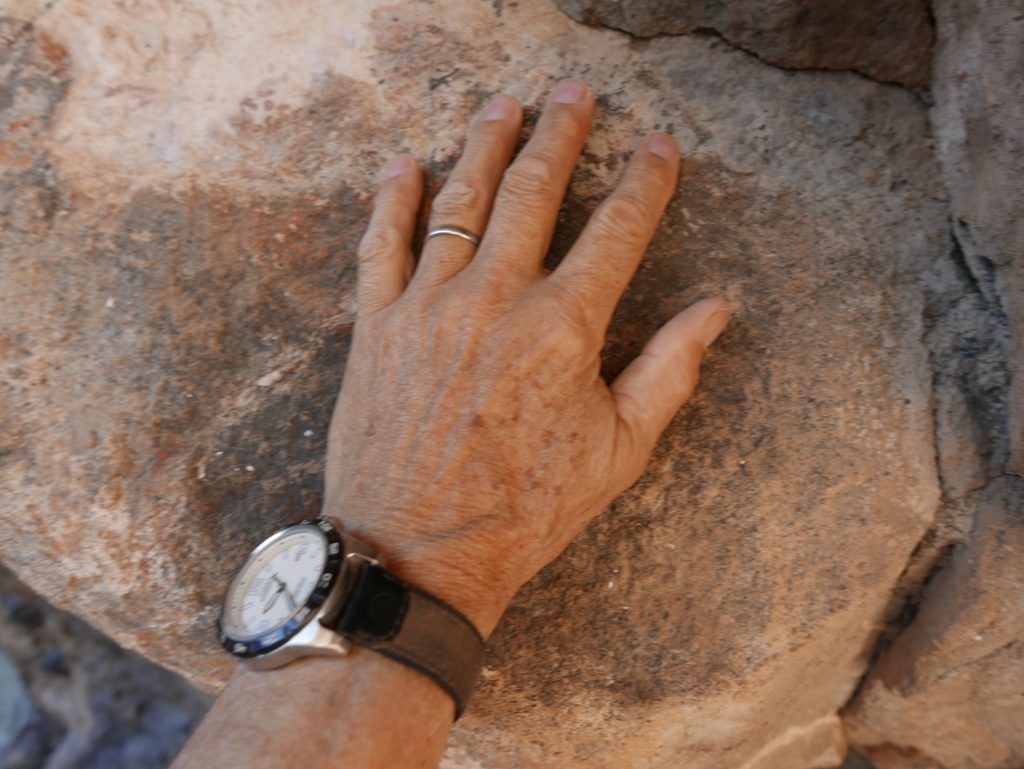
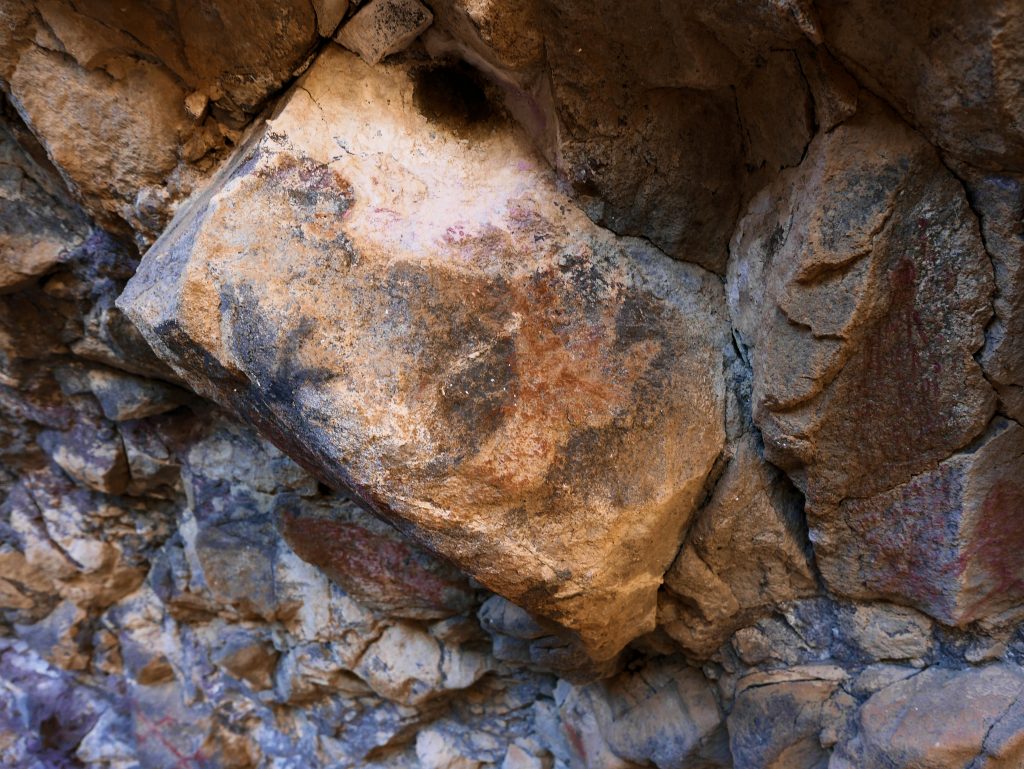
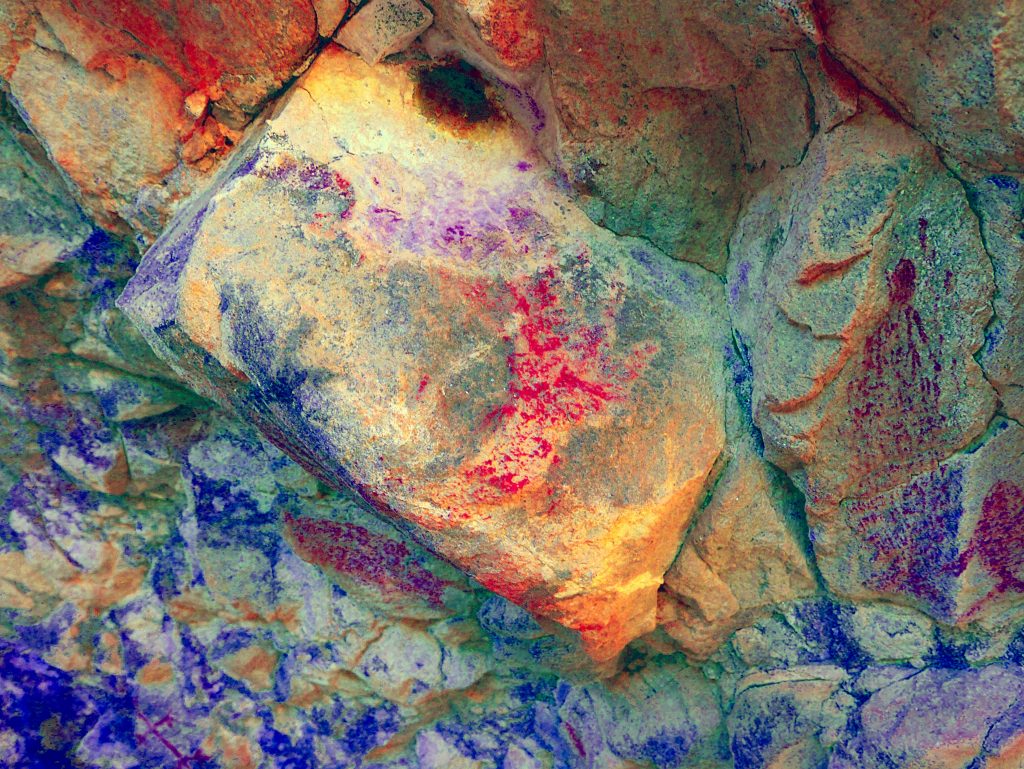
On the right side of the same protruding rock is another reverse handprint, again of a left hand, this time in black and showing about 10cms of wrist (without the watch). There is a faint wash of red paint over the top of the handprint.
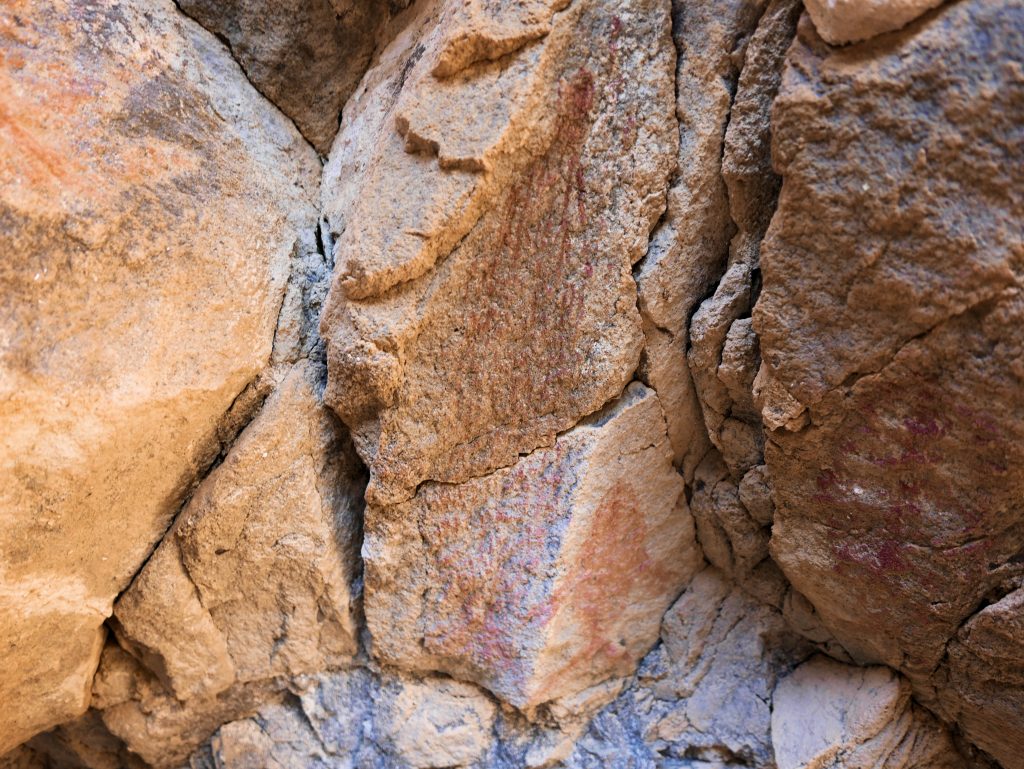
About 40cms to the right of the Lizard Man there is a painting, in red, of a fish about 25cms long with Tail down. The fish does not have a recognizable head only some kind of pointed object about 2 cms long, and there are internal longitudinal lines. This figure is distinctly similar to a petroglyph image in the San Nicholas arroyo some 50kms distant. See also the image in Site S2 Cueva No Tira that has the dart through it. . . Hmm?
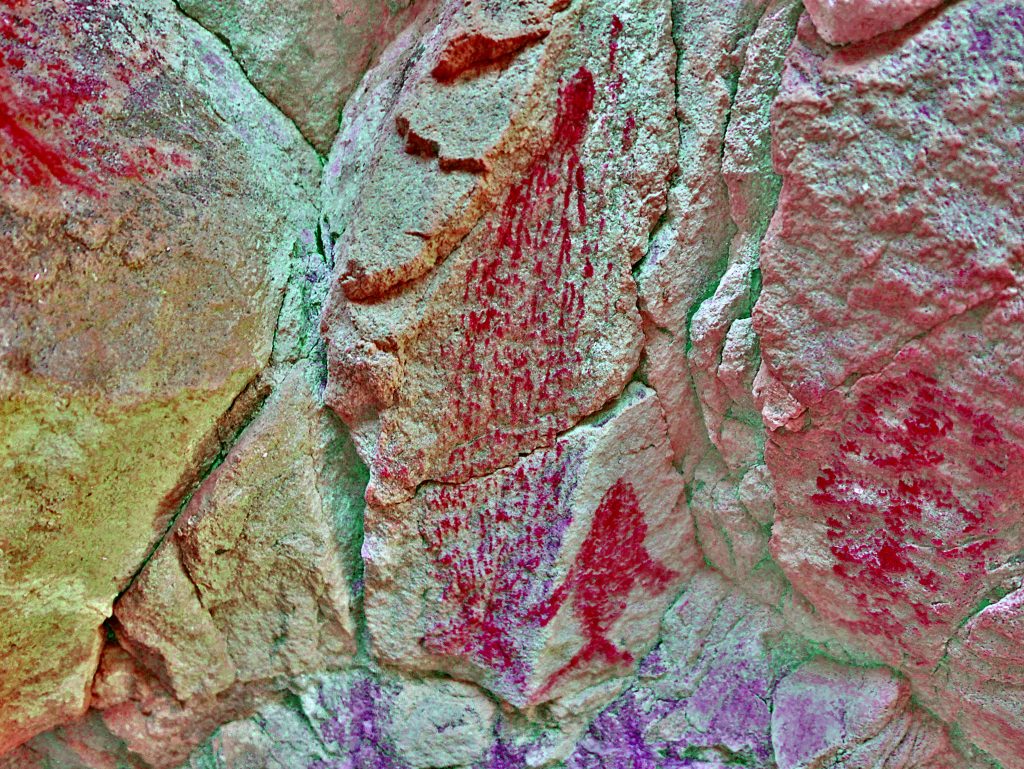
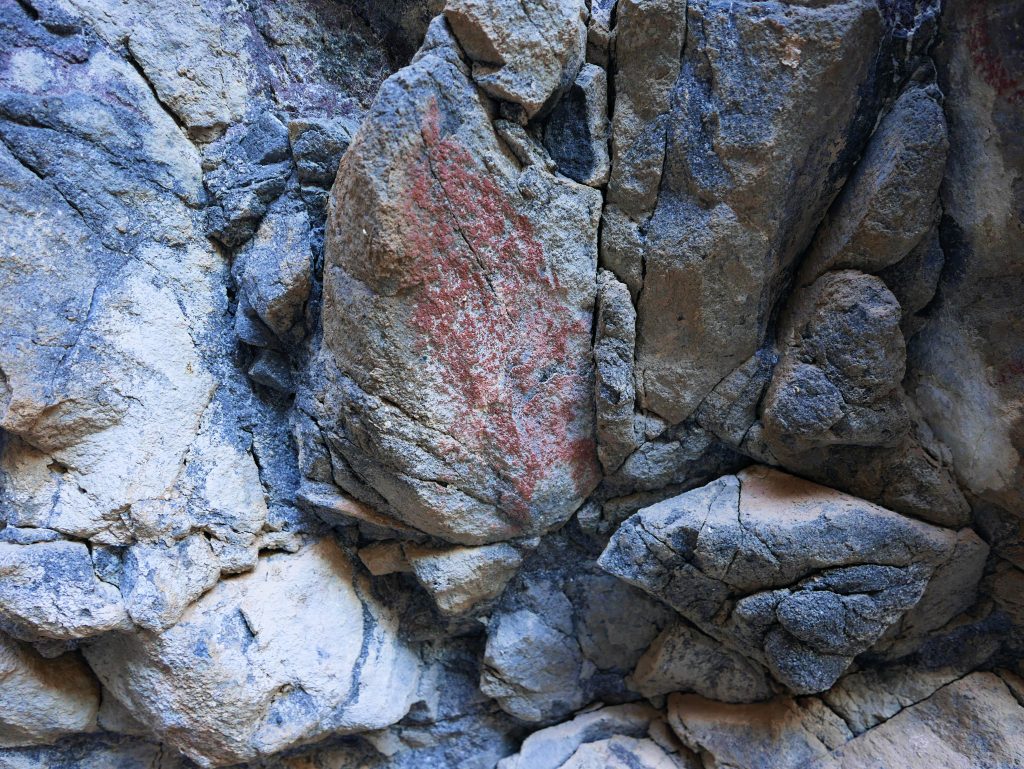
About 80cms to the left of the Lizard Man there is a painting of another fish with a pointed head. Do you see a theme here in the shelters in this arroyo?
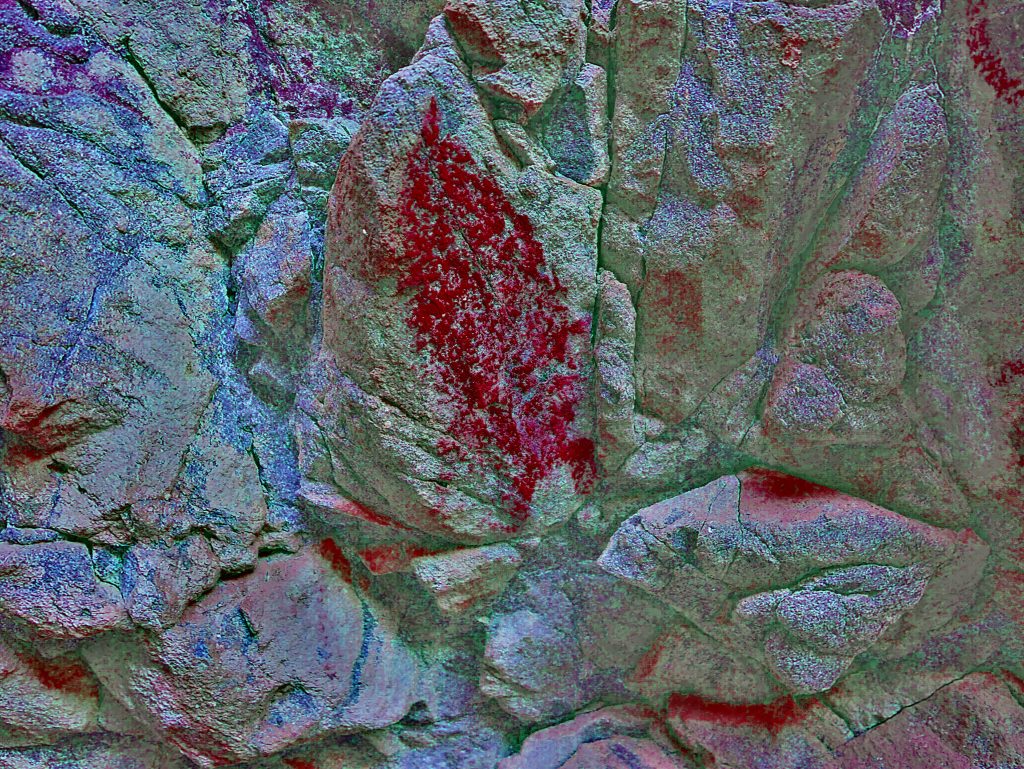

On another rock is the same pointed fish. This time superimposed over an unclear object. Could this be another Conflict situation being shown?
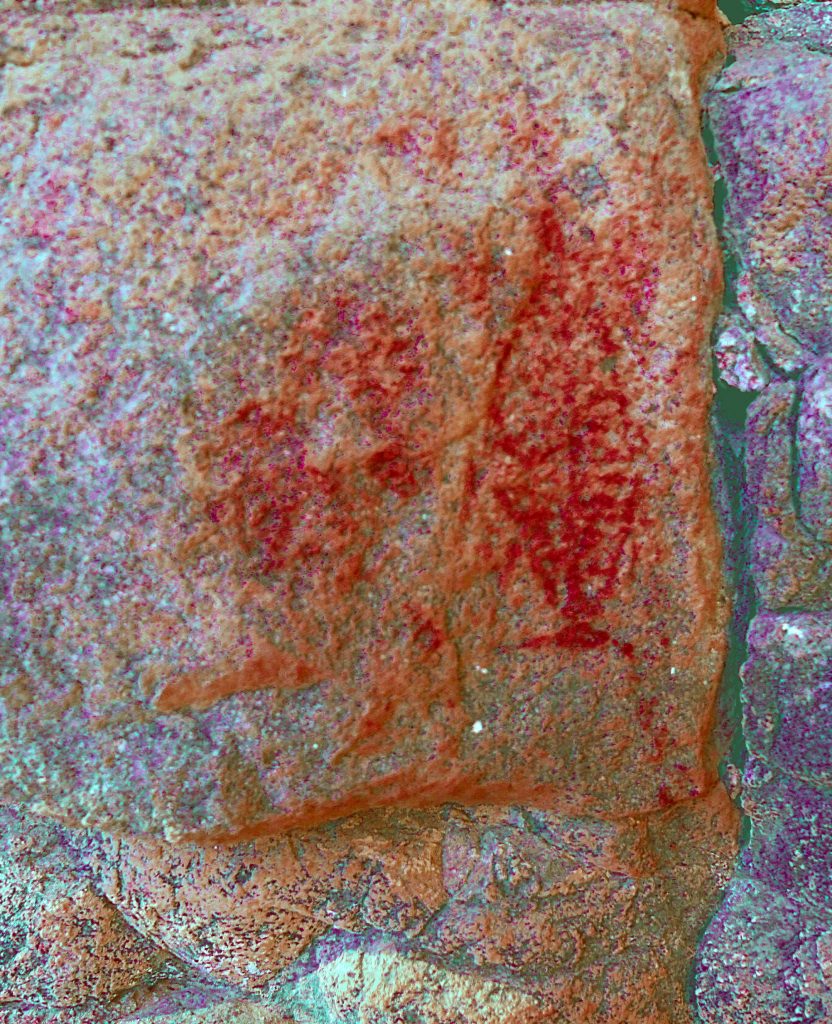
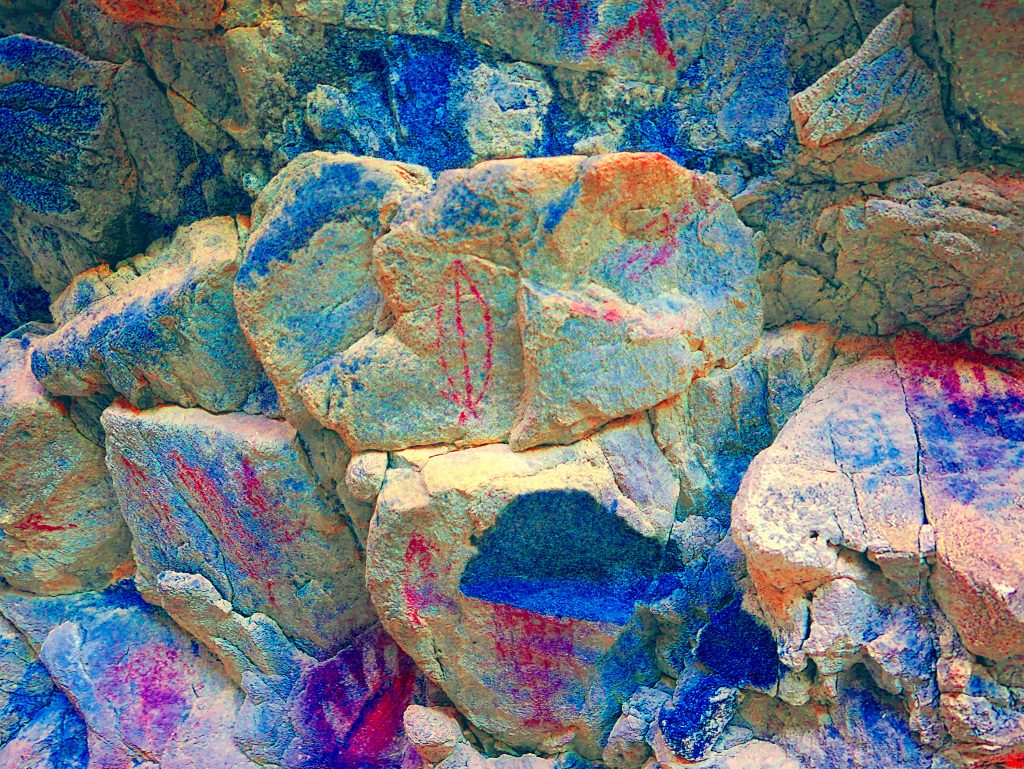
Not too far away is yet another rendition of a fish with longitudinal lines in the interior. We can’t tell if it has a pointed head as the top half of the rock containing the painting has been broken off. Is the Lizard Man getting really mad with the Fish man?
Notice also the negative hand prints, one with a black line through it.
Photo: LZ-05_ac_lds
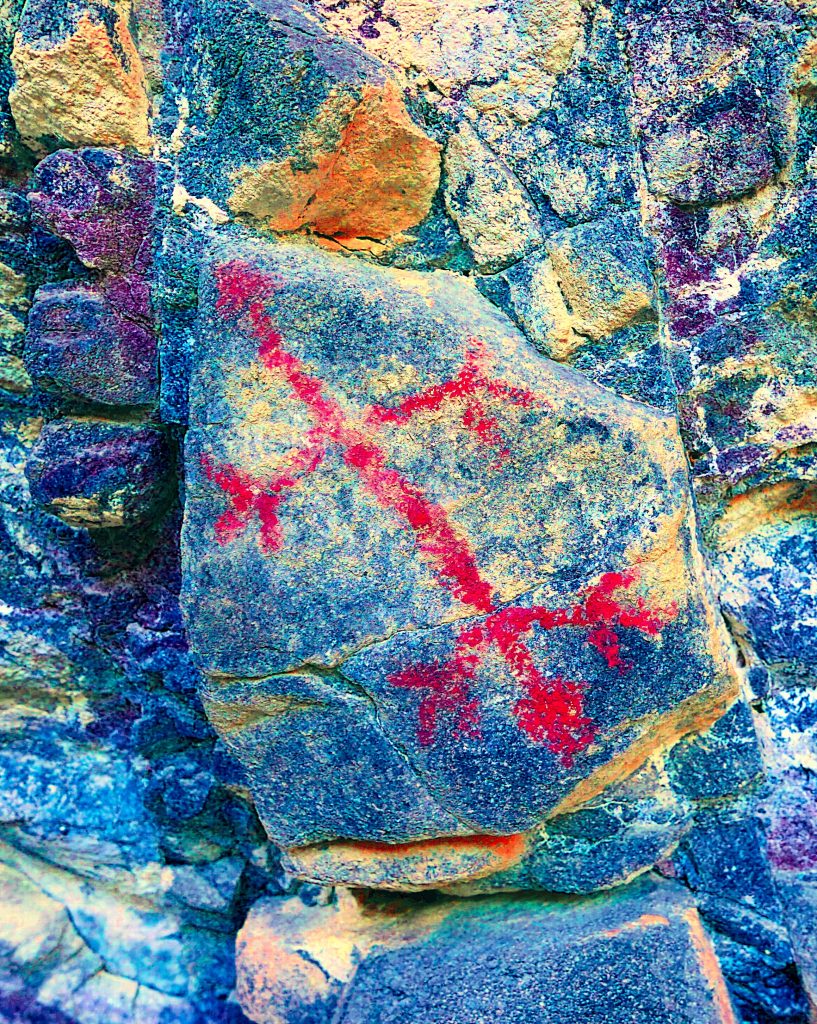
Getting tired of fish?
On another nearby protruding rock there is a rendition of another Lizard Man, this time in red, about 20cms long with three toes on each foot and an obvious phallic member.
Photo: LZ -10_ac_lds
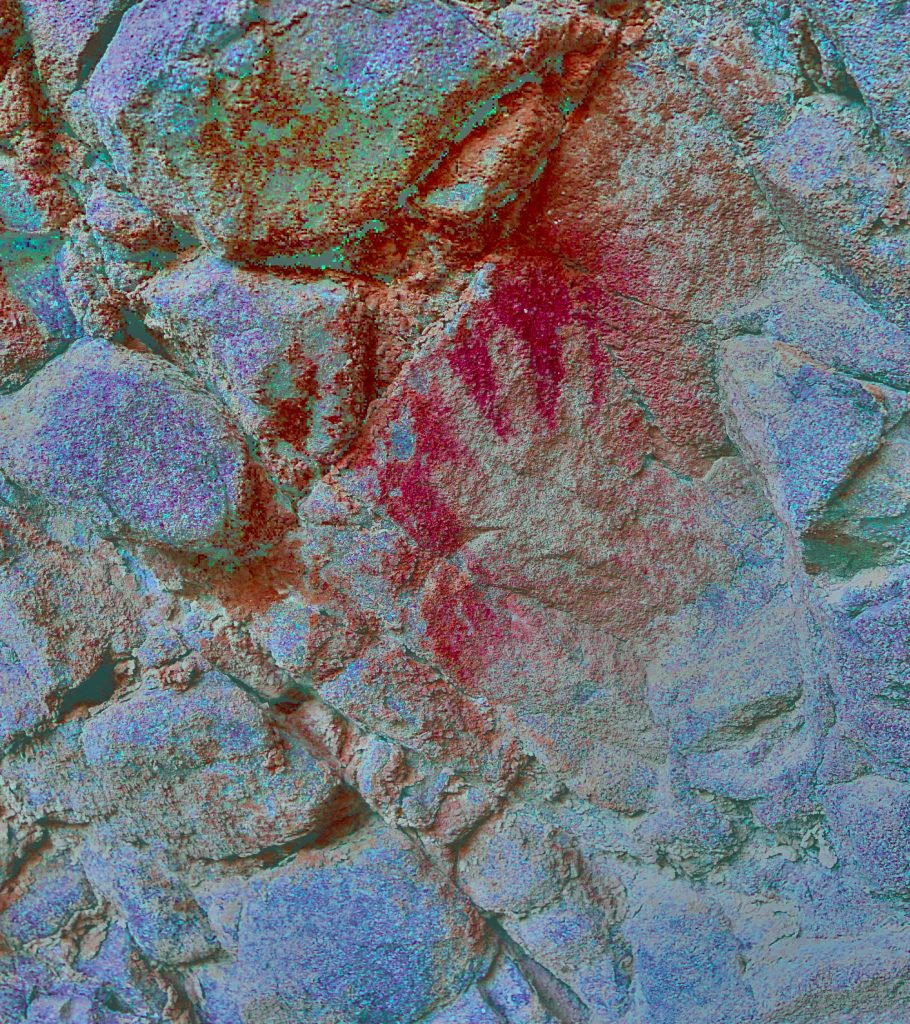
Here you can see a negative handprint in red. To me it looks like an image of a left hand with the top half of the little finger missing.
Photo: LZ-20_flt_lrd
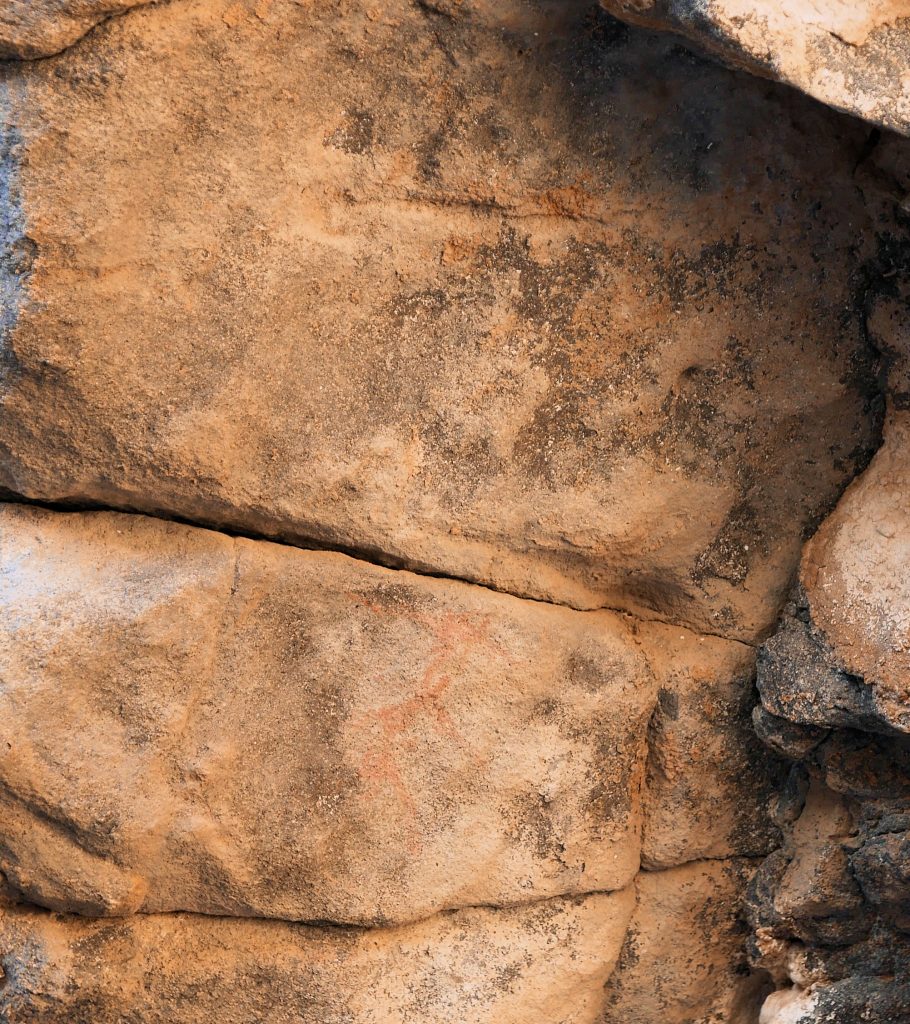
There is a red painted object on a protruding rock in the ceiling of the shelter about 5 meters above ground. Part of the image is perhaps missing but the remaining outline is quite clear. Scaffolding would have been required to reach this high to paint the object. No other objects are this high on the roof of the shelter.
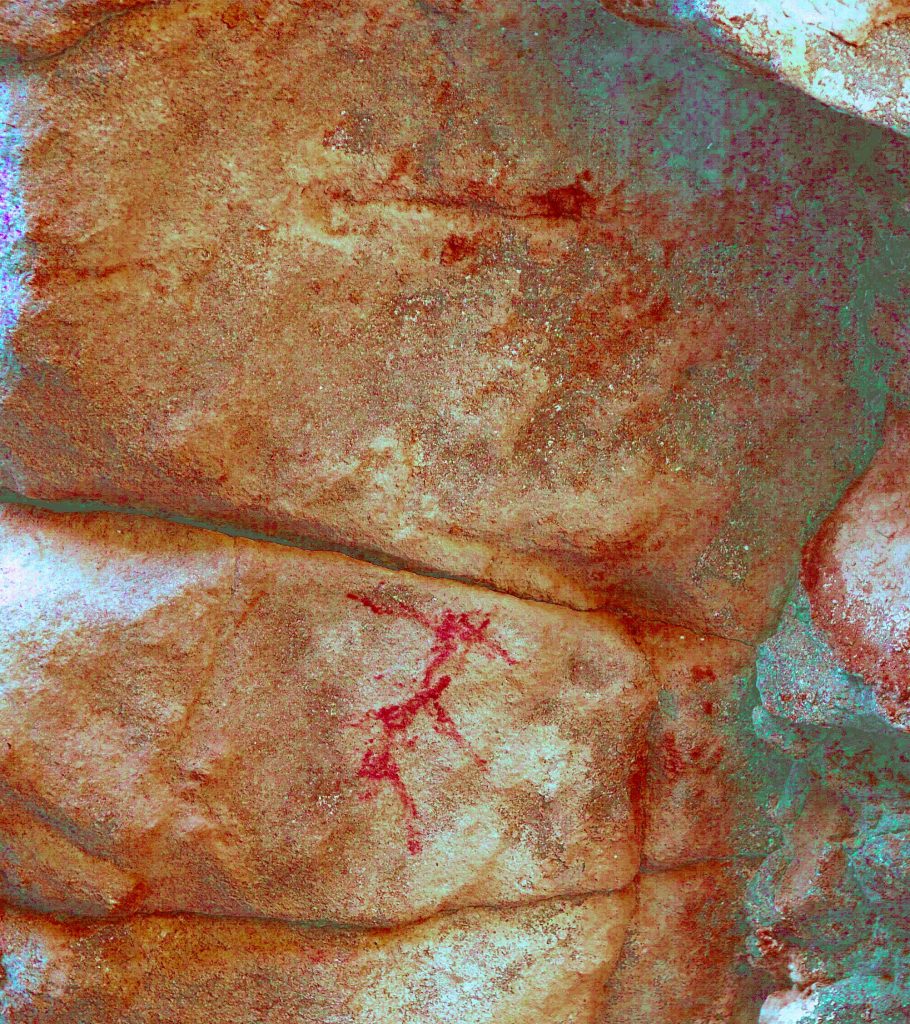
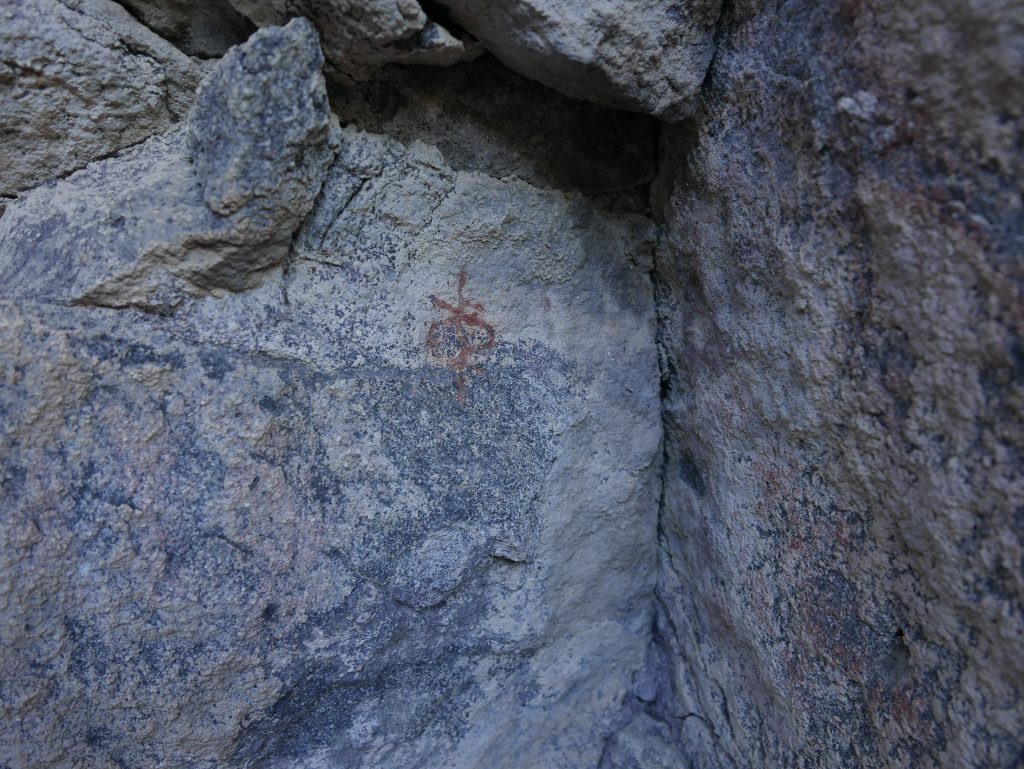
Here is what I can only call a ‘thing’ It is about 6cms long and quite finely outlined in red. What’s your take on it?
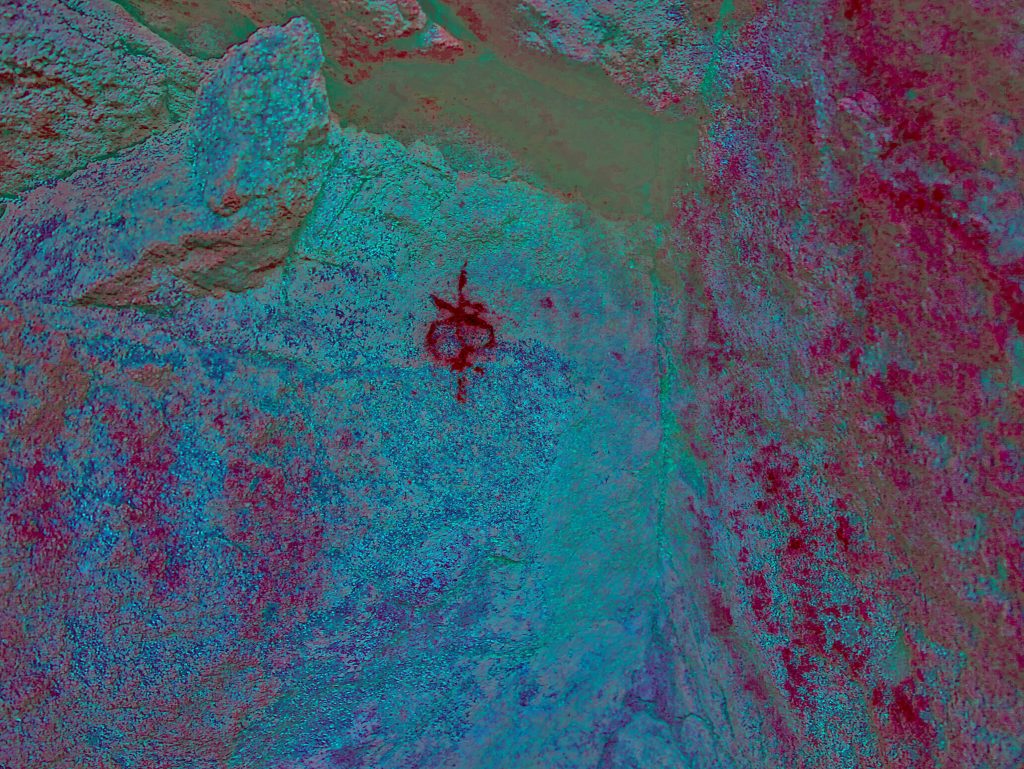
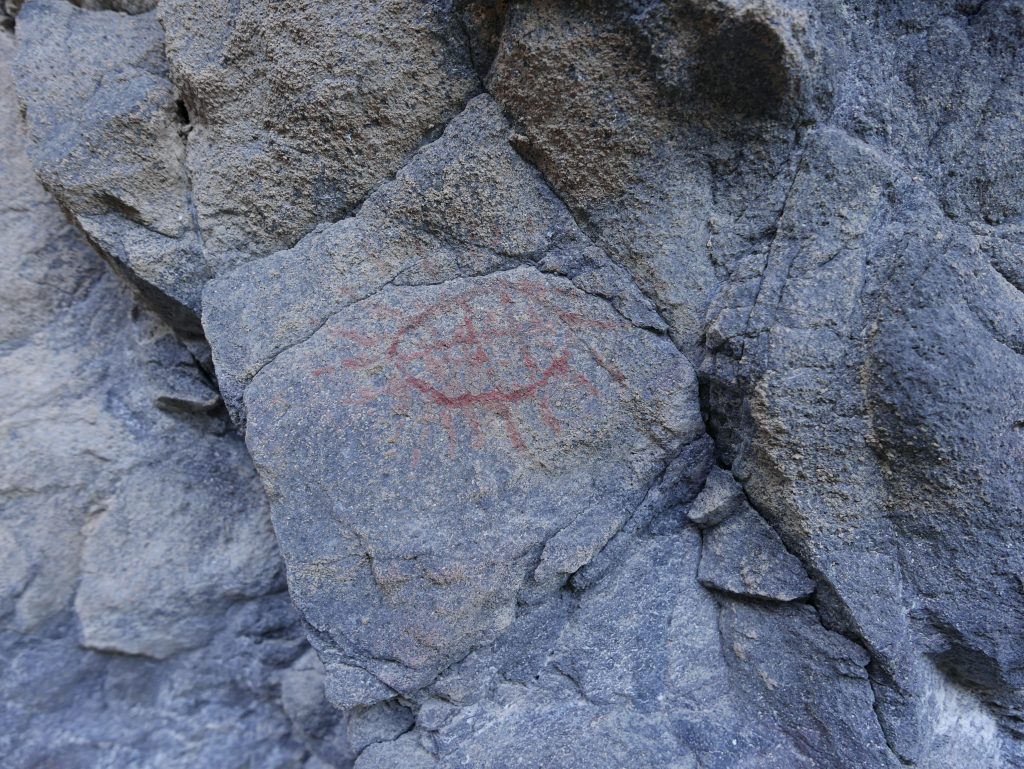
There is a clear picture of a oval object in red with radiating lines. The interior of the object is sectioned off in rectangles and has many included red dots. This may be a representation of a marine Chiton (perhaps chiton tuberculatus or the hairy mopalia) which can reach 3.5 inches in length and may have been a food source for the Cochimi.
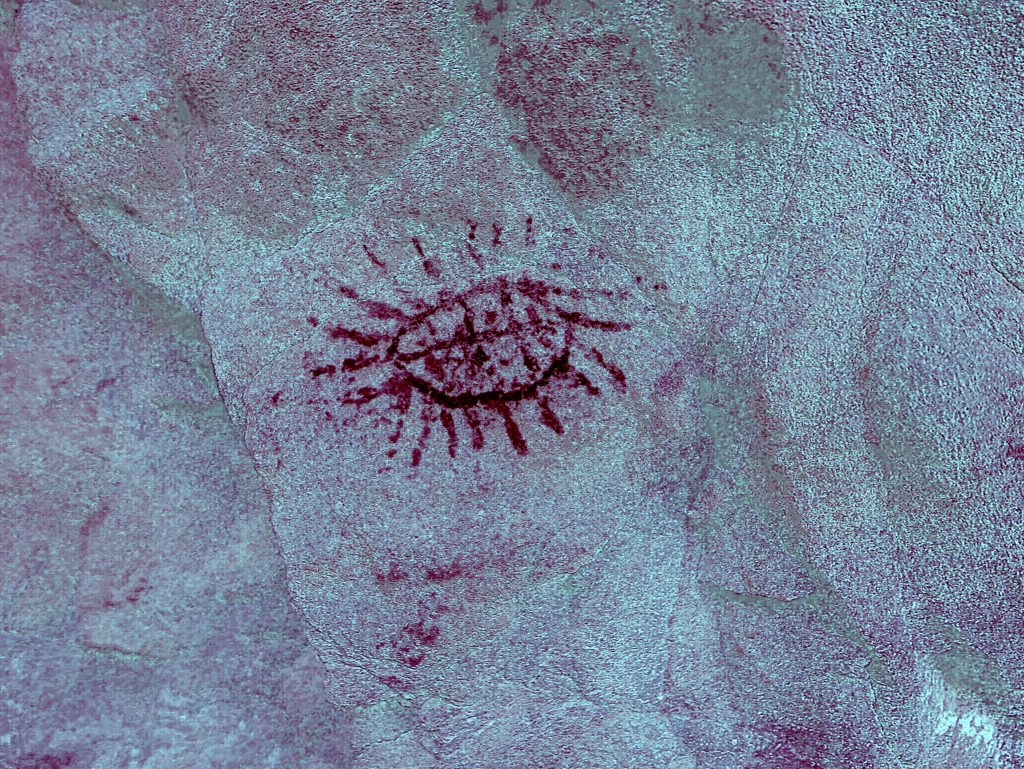
There are many fish portrayed at this site, mostly in red.
There are two turtle images.
There are other reverse hand prints, usually placed over another object, some black, some red, maybe made by the same painter.
There are many other indistinct objects to be seen in this shelter.
There are no petroglyphs anywhere in the shelter.
